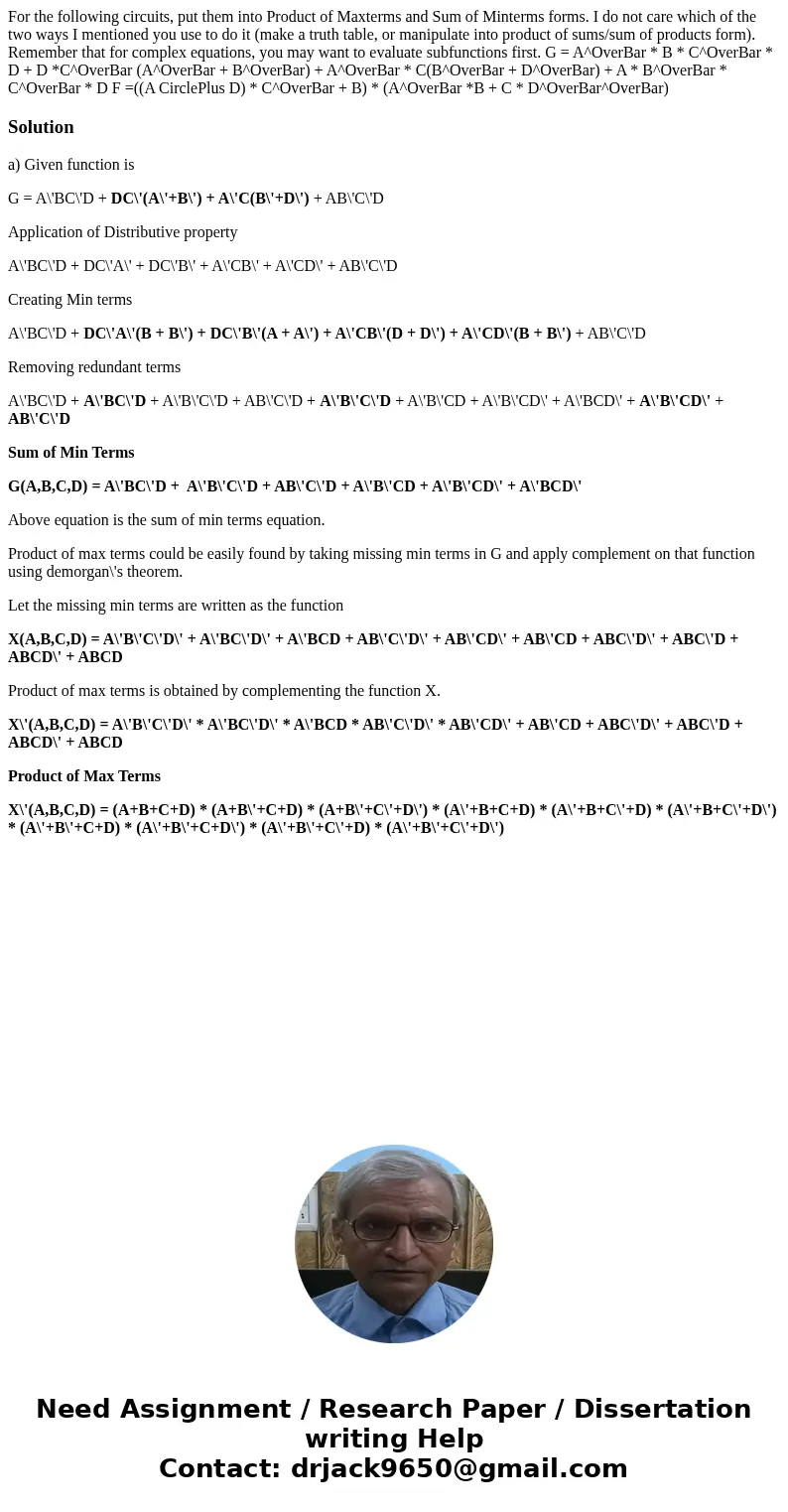For the following circuits put them into Product of Maxterms
Solution
a) Given function is
G = A\'BC\'D + DC\'(A\'+B\') + A\'C(B\'+D\') + AB\'C\'D
Application of Distributive property
A\'BC\'D + DC\'A\' + DC\'B\' + A\'CB\' + A\'CD\' + AB\'C\'D
Creating Min terms
A\'BC\'D + DC\'A\'(B + B\') + DC\'B\'(A + A\') + A\'CB\'(D + D\') + A\'CD\'(B + B\') + AB\'C\'D
Removing redundant terms
A\'BC\'D + A\'BC\'D + A\'B\'C\'D + AB\'C\'D + A\'B\'C\'D + A\'B\'CD + A\'B\'CD\' + A\'BCD\' + A\'B\'CD\' + AB\'C\'D
Sum of Min Terms
G(A,B,C,D) = A\'BC\'D + A\'B\'C\'D + AB\'C\'D + A\'B\'CD + A\'B\'CD\' + A\'BCD\'
Above equation is the sum of min terms equation.
Product of max terms could be easily found by taking missing min terms in G and apply complement on that function using demorgan\'s theorem.
Let the missing min terms are written as the function
X(A,B,C,D) = A\'B\'C\'D\' + A\'BC\'D\' + A\'BCD + AB\'C\'D\' + AB\'CD\' + AB\'CD + ABC\'D\' + ABC\'D + ABCD\' + ABCD
Product of max terms is obtained by complementing the function X.
X\'(A,B,C,D) = A\'B\'C\'D\' * A\'BC\'D\' * A\'BCD * AB\'C\'D\' * AB\'CD\' + AB\'CD + ABC\'D\' + ABC\'D + ABCD\' + ABCD
Product of Max Terms
X\'(A,B,C,D) = (A+B+C+D) * (A+B\'+C+D) * (A+B\'+C\'+D\') * (A\'+B+C+D) * (A\'+B+C\'+D) * (A\'+B+C\'+D\') * (A\'+B\'+C+D) * (A\'+B\'+C+D\') * (A\'+B\'+C\'+D) * (A\'+B\'+C\'+D\')

 Homework Sourse
Homework Sourse